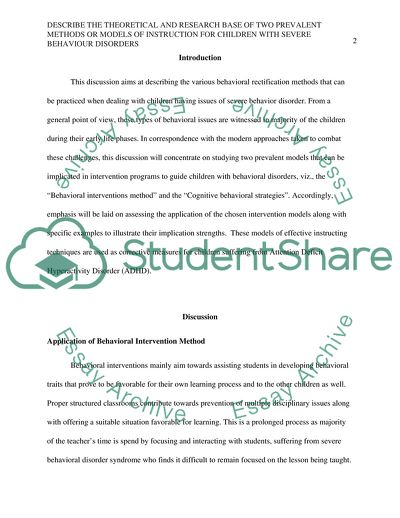Cite this document
(Models of Instruction for Children with Severe Behavior Disorders Report Example | Topics and Well Written Essays - 1500 words, n.d.)
Models of Instruction for Children with Severe Behavior Disorders Report Example | Topics and Well Written Essays - 1500 words. https://studentshare.org/education/1807680-describe-the-theoretical-and-research-base-of-two-prevalent-methods-or-models-of-instruction-for-children-with-severe-behavior-disorders
Models of Instruction for Children with Severe Behavior Disorders Report Example | Topics and Well Written Essays - 1500 words. https://studentshare.org/education/1807680-describe-the-theoretical-and-research-base-of-two-prevalent-methods-or-models-of-instruction-for-children-with-severe-behavior-disorders
(Models of Instruction for Children With Severe Behavior Disorders Report Example | Topics and Well Written Essays - 1500 Words)
Models of Instruction for Children With Severe Behavior Disorders Report Example | Topics and Well Written Essays - 1500 Words. https://studentshare.org/education/1807680-describe-the-theoretical-and-research-base-of-two-prevalent-methods-or-models-of-instruction-for-children-with-severe-behavior-disorders.
Models of Instruction for Children With Severe Behavior Disorders Report Example | Topics and Well Written Essays - 1500 Words. https://studentshare.org/education/1807680-describe-the-theoretical-and-research-base-of-two-prevalent-methods-or-models-of-instruction-for-children-with-severe-behavior-disorders.
“Models of Instruction for Children With Severe Behavior Disorders Report Example | Topics and Well Written Essays - 1500 Words”. https://studentshare.org/education/1807680-describe-the-theoretical-and-research-base-of-two-prevalent-methods-or-models-of-instruction-for-children-with-severe-behavior-disorders.


